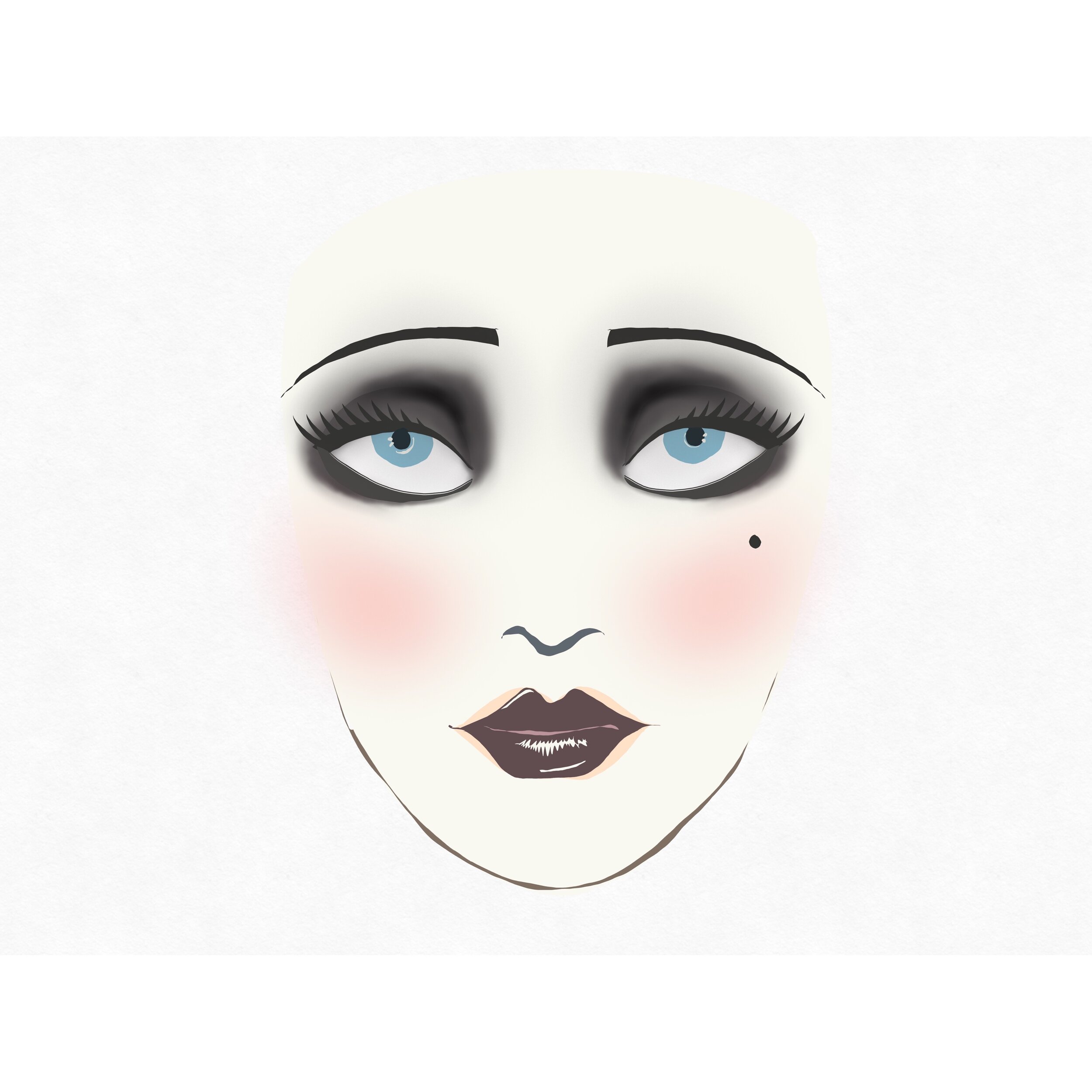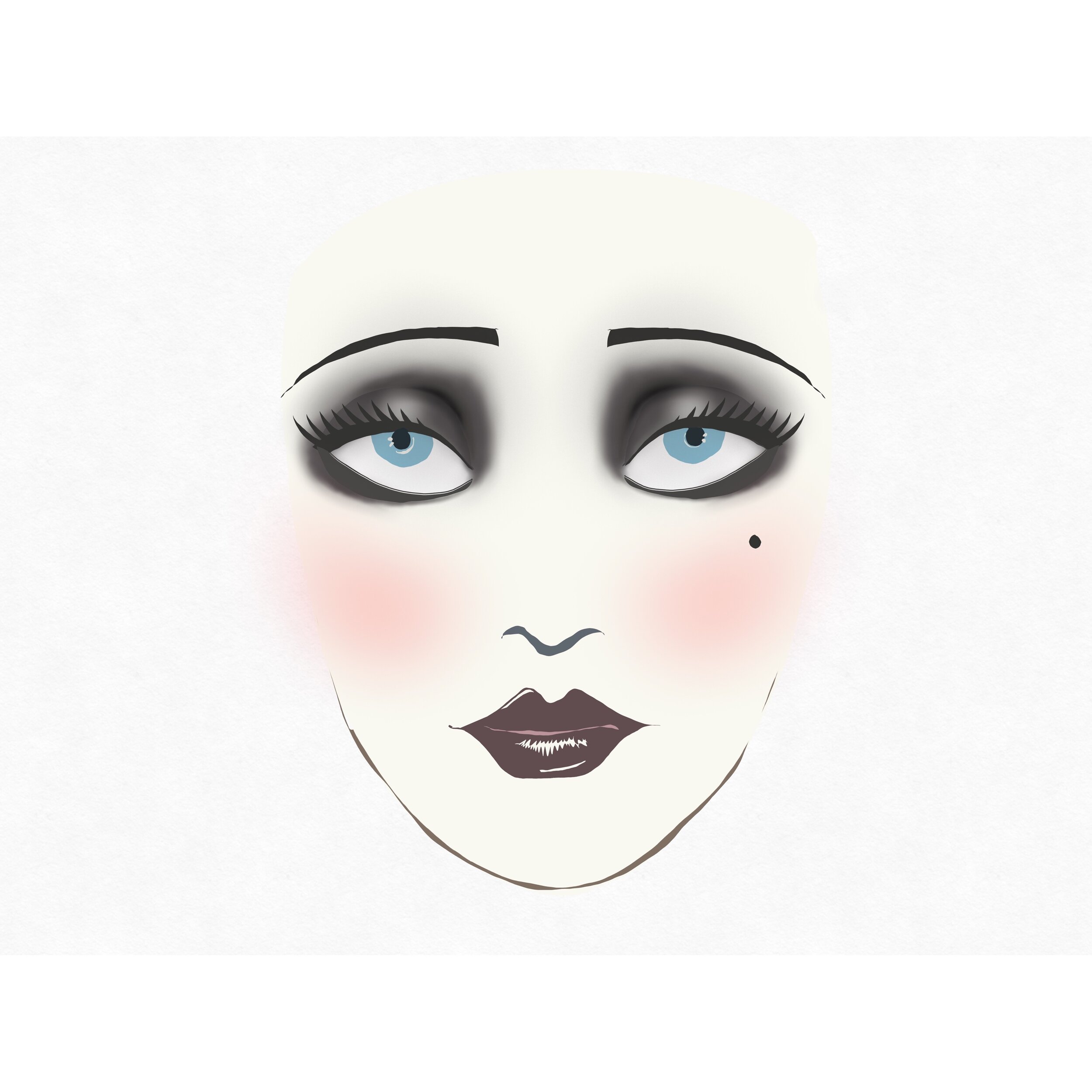The Jazz Age and the loss of innocence
Was it really the era of Jazz and ‘sin’ or was it the decade we just ‘grew up’?
As the austerity of the Edwardian period drew to a close and with the First World War ending in 1919 and prohibition enacted on new years eve 1920 (who ever thought that was a good idea...) the world went wild! The jazz age had begun and with it came a major societal shift that saw dramatic changes in style, fashion and the expectations of women. No longer did woman feel restricted, they had had their first taste of being apart of the work force (due to the men heading off to war) and they were ready for more. Having previously been hampered by long skirts and complicated hair styles, hem lines and hair became much shorter as women prepared themselves for a more active role in society.
Makeup started out as a wash of pale earthy colours all over the lid but soon progressed to something far more dramatic mainly due to a little thing we now call 'celebrity'. Even though silent films began production as early as 1895 it wasn't until the 1920's that the idea of 'celebrity' came into being. It is with this that we then see the iconic vision of the makeup look of this period. The dark dramatic eyes, perfectly curve (not arched, but more slanted downwards) and extended brows, pale, matt complexion and dark Cupid bow lips were born out of the silent film era.
Due to the limitations of the film technology of the time (remember it was in its infancy and was thought by many to be no more than a passing fad!) the makeup styles of the actors became quite stylised. The harshness of the lighting added to the graininess of the black and white film tended to 'washout' the features of the actors, therefore, they had to wear heavy makeup to define their features so that they could convey their messages with only a look. As has happened in every age since women adored these silent movie stars, stars such as Mary Pickford and Clara Bow (famed for those lips) women wanted to emulate their favourite actresses dark, dramatic looks.
It was in 1920 that Max Factor, a pioneer of Hollywood movie cosmetics, began selling his line of Society Makeup to the public. This ushered in a new era of acceptance for lipstick, and cosmetics in general – even his blatant use of the word “makeup” was then new. Before the decade was out, he had also invented lip gloss (1928) and introduced the first commercial lip brush to the public (1929).
Believe it or not, even the history of nail polish is interesting. The idea of decorating or colouring nails has been dated as far back as the 9th century when nails were tinted with scented red oils and then in the 13th century China where a combination of beeswax, egg whites, gelatine, vegetable dyes, and gum arabic was used to paint nails with colour intended to define social ranking, it isn't until 1920 that we see the kinds of enamel we know today. Originating in France and inspired by high-gloss car paint, makeup artist Michelle Menard adapted the enamel used for cars for use on nails. Her creation was popular among flappers who generally only painted the middle of the nail, leaving the cuticles and tip barely in a style known as “The Moon Manicure.” For more wonderfulness on the history of this style of manicure please visit Marija at Purple Pinky Honey
The main thing to think about when trying to achieve a 20's inspired look is this... don't be afraid of colour or intensity! Take a look at these beautiful images for some inspiration.
Key Features of 1920's makeup look
Dark, smokey, heavily lined, you're trying to achieve a heavy lidded or 'sleepy' affect. Focus is at the inner corner to centre of the eye, opposite to modern makeup styles where we emphasis the outer corners. Kohl was used to line and common household products such as petroleum jelly (Vaseline) was mixed with soot or coal (I would not recommend you trying this now though!). The mid to late 20's saw the development of mascara in the form of various styles such as cake, tube, wax, and liquid applied with a brush
Eye brows: Low, thin, angled down (towards the ears) and extended, it almost gives a look of sadness or melancholy.
Foundation: Pale, matt (although Chanel accidentally made tanning fashionable when she fell asleep in the sun one time). Early in the decade powders were generally white and ivory. Sadly ceruse, made from white lead, was still popular at this time and was most famously used by Merle Oberon well into the 30's and 40's to hide her Indian heritage. This product, as you can imagine, was discovered to be toxic and caused a range of issues such as pitting and other such damage to the skin but also for those who used it consistently it caused physical problems including facial tremors, muscle paralysis, and even death.
Cheeks: ‘rosy', rouged in reds and pinks, focus on the apple. Popular forms available; creams, powders, liquids, and rouge papers.
Lips: Red, from brights to dark, Cupid bow which focuses on the centre of the lip leaving the outer corners untouched. Around 1915, lipstick started to be sold in metal containers, with various push-up tubes. The first swivel-up tube was patented in 1923, in Nashville, Tennessee. This packaging then enabled manufacturers to create stylish and seductive packaging options for the express purpose of enticing the consumer, and so the love affair with packaging begins! I'll own it, I'm a sucker for a nice box!
Just look at the glorious ad glamourous Lucy Doraine. Her look is classic Jazz Era elegance and glamour. By the time she moved to Hollywood ‘Talkies’ were all the new rage and sadly this new revolution of talking pictures finished her career as it did for many silent films starts.
A video tutorial with a list of products close to those that would have been used is on the way…
Next week we'll look at the 1920's hair options... until then I dare you to try out a 20's inspired look and post some pics!











